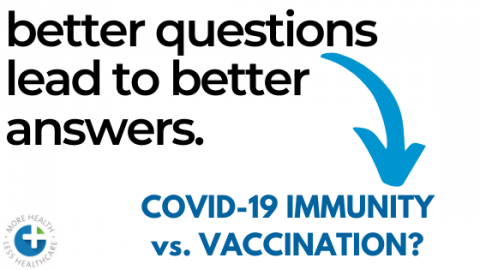
When the whole Corona thing broke and people were posting the 2 different curves of a major spike but major drop off versus the one that everyone has rallied around, the ‘flatten the curve’ curve, my initial thought was ‘why are we supporting the flatter curve that has the problem lasting so much longer?’
I wasn’t looking at any of the ‘predicted’ numbers associated with the graphs but just the pictures themselves. A picture is worth a 1,000 words, right?
I didn’t express this concern then because it was new and I wanted to get it right instead of just trying to be right. Since then, I understand the reason for the flatter curve to take demand of hospital admissions because the predicted number of deaths were in the millions.
But now, we know those numbers was either ridiculously off or the administration has done a good job at mitigating the potential destruction of life.
As of writing this, there have been 22,000 deaths in the US from COVID, with almost half of those being in the NY/NJ region. We are the highest in the world and that’s what the media likes to spout off.
But with risk analysis, we have to look at absolute numbers like the 22,000 but also the relative numbers (percentages). As of right now, the chance of dying of COVID in the US is 0.006%. In other words, you have a 99.994% of NOT dying from COVID.
We don’t know how many have been infected because we aren’t testing everyone but we do know who are the most vulnerable…the ones with underlying chronic illness. I know there is always going to be an exception to that rule and that’s what our culture LOVES to do, play the exception.
We love the underdog story. Therefore, we LOVE to find the exception and hold onto that. It’s like March Madness. We LOVE the lower seeded team to upset a big dog and we watch and cheer for those games. But the reality is that in the 34 years since the NCAA tournament expanded to its modern 64-team format, 136 teams have made the Final Four, but only five of those have been double-digit seeds. Upsets are the exception.
But how can you say a life is an exception? When we are making nation wide policy that has more unintended consequences of life lost than a person’s chance at perishing due to COVID (if their death certificate wasn’t just slapped with a COVID cause).
We make those decisions every day. There’s a chance you die from a car accident, yet you still drive. Dying a car accident is the exception, not the rule. There’s a chance you die from drowning in your bath tub yet you soak and allow your kids to take a bath rather frequently. Death by bath tub drowning is an exception. There’s a chance you die from a dog bite, yet millions adopt pets every year.
My desire of having life return to normal isn’t because of economic ones but because of immunity ones, which will actually save lives. If we are going to prevent the recurrence of this again, we need healthy people exposed. You can’t create immunity without exposure.
But isn’t that what the vaccine will do? Isn’t that why we NEED a vaccine?
Vaccination is just injecting something into you. The mechanism of how a vaccine creates immunity is an old, dogmatic science that hasn’t been questions because the pharmaceutical companies that make the shots are shielded against any liability. If we look into history, 90% of the diseases we vaccinate against now were wiped out before a vaccine was even on the market. Sanitation. Hygiene. Nutrition.
How immunologists approach cancer, autoimmune, and other immune system issues are ever evolving and complex but the science on how a vaccine works is settled? Seems a little too political for me. The mantra of science is ‘always be learning, always be questioning.’ But what do I know?
Even Dr. Paul Offit, the poster child of vaccines, is sketched out about driving a vaccine to market quickly, and the dude owns patents on vaccines. He’s as pro-vaccine as you can get. In reference to a potential COVID-19 shot, he says,
“You better make damn sure that vaccine has been extensively studied in animal models, been slowly, and more gradually in larger numbers of people for safety, safety, safety, especially if you’re putting it in people who are unlikely to die from this…
A typical time it takes to make a vaccine is 20-25 years.”
Paul Offit, M.D.
This is why people like Dr. Shiva, with no ties to vaccines, breaks it down beautifully and are asking the questions that many fear.
The reality is that your greatest risk factor for COVID hospitalization is metabolic conditions like diabetes, heart disease, and obesity.
The other reality is that vaccinations don’t work well in obese people. Vaccines require a healthy individual to have an appropriate response.
Therefore, if we are going to make any impact against the threat of infectious disease, we have to start by building metabolic health.


0 Comments